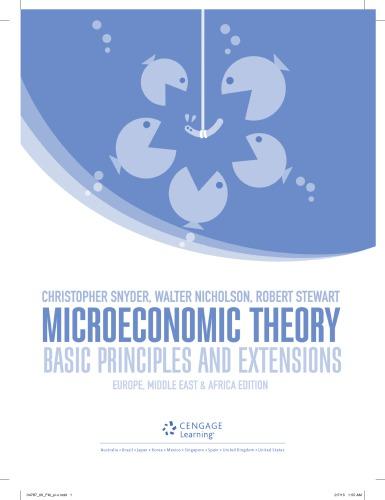9.5 If a single irm produces bottles in both locations, then it will obviously want to get...
Question:
9.5 If a single irm produces bottles in both locations, then it will obviously want to get as large an output as possible for a given labour input. How should the irm allocate labour between the two locations to do so? Explain precisely the relationship between l1 and l2.
Assuming that the irm operates in the eficient manner described in part (a), how does total output (q) depend on the total amount of labour employed (l)?
The general Cobb–Douglas production function for two inputs is given by q = f
(k, l
) = Ak
αI
β, where 0 < α < 1 and 0 < β < 1. For this production function:
a.
Show that fk > 0, f1 > 0, fkk < 0, fll < 0, and fkl =
flk > 0.
b.
c.
Show that eq, k = α and eq, l = β.
Scale elasticity can be deined as eq, t = �f(tk, tl
)
�t
·
t f
(tk, tl
)
, where the expression is to be evaluated at t = 1.
Show that, for this Cobb–Douglas function, eq, t =
α + β. Hence in this case the scale elasticity and the returns to scale of the production function agree.
d.
e.
Show that this function is quasi-concave.
Show that the function is concave for α + β ≤ 1 but not concave for α + β > 1.
Step by Step Answer:

Microeconomic Theory Basic Principles And Extensions
ISBN: 9781473729483
1st Edition
Authors: Christopher M Snyder, Walter Nicholson, Robert B Stewart






